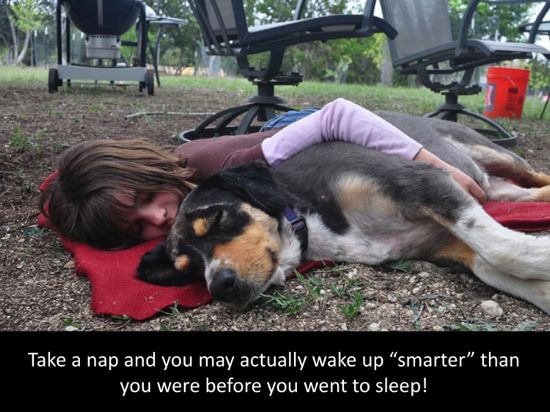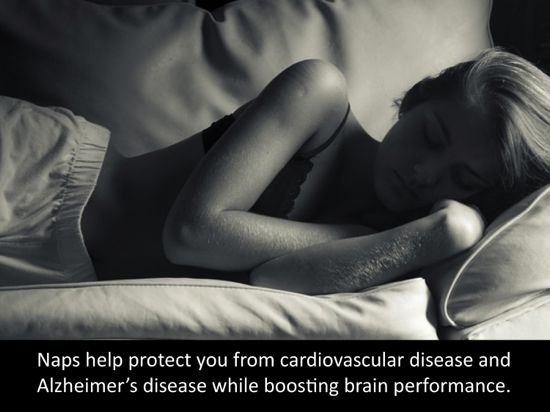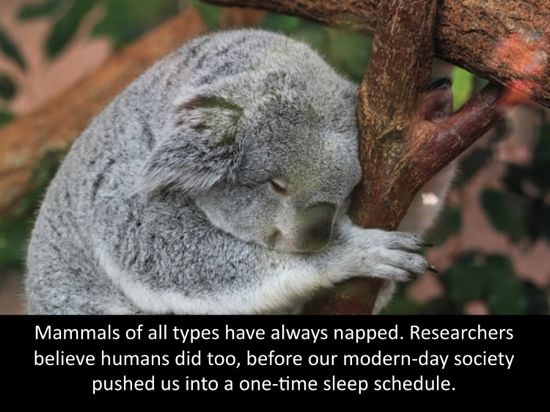As writers, we often wish we could reach optimal creativity when it comes to producing our stories.
Turns out that there’s an easy way to boost your creativity every day. It’s really good for your health, and it can give you a mental boost at the same time.
What is it? A simple, short nap!
The Mental & Physical Benefits of a Nap
If you haven’t been a regular napper since you were in diapers, you may want to reconsider it. Studies over the past couple decades show a short nap of 20-30 minutes can:
- Boost mood: A 1999 study found that a mid-afternoon nap improved not only sleepiness and performance level, but self-confidence.
- Create better focus and alertness: A NASA study found that a 40-minute nap improved performance by 34 percent and alertness by 100 percent in sleepy pilots and astronauts.
- Improve performance: A 2006 study of physicians and nurses working 3 consecutive night shifts in an emergency department found that those who napped for an average of 25 minutes had fewer performance lapses, more vigor, and less fatigue, and that they tended to more quickly complete their tasks.
- Improve ability to learn: Another 2006 study found that naps as short as 10 minutes restored wakefulness, improved performance, and enhanced learning ability.
- Improve memory better than caffeine: A 2008 study found that taking naps was more effective for improving verbal memory, motor skills, and perceptual learning than caffeine was.
- Help maintain healthy blood pressure: A 2011 study found that participants who napped at least 45 minutes during the day had lower average levels of blood pressure after a period of stress than those who didn’t nap. Researchers theorized that naps could help improve cardiovascular health. An earlier 2007 study found similar results—participants who napped an average of 30 minutes a day had a 37 percent lower risk of dying from heart disease.
The National Sleep Foundation also notes that naps help improve problem-solving skills, get you over mid-afternoon sleepiness, and provide for needed relaxation in a hectic world.
Naps Can Help You Reach Optimal Creativity and Productivity
From these studies we can see that naps can help improve many areas of your life. But do they have anything to do with encouraging creativity? Turns out they might—because of how they act on the right brain.
In 2013, scientists from Georgetown University’s Center for Functional and Molecular Imaging in Washington presented results of their study on the brain activity of participants who were napping.
They found that the left brain—known for logic and analyzing (the “editing” side of the brain)—rested quietly. The right side of the brain, however—the side in charge of creativity (the “drafting” side of the brain)—chattered away to itself and the other side of the brain the whole time.
Napping also seems to boost brainpower—important for creativity. In a 2010 study, scientists found that an hour’s nap dramatically boosted and restored brainpower.
 “Sleep not only rights the wrong of prolonged wakefulness,” said lead study author Dr Matthew Walker, an assistant professor of psychology at the University of California, Berkeley, “but, at a neurocognitive level, it moves you beyond where you were before you took a nap.”
“Sleep not only rights the wrong of prolonged wakefulness,” said lead study author Dr Matthew Walker, an assistant professor of psychology at the University of California, Berkeley, “but, at a neurocognitive level, it moves you beyond where you were before you took a nap.”
He added that sleep helps clear the brain’s short-term memory stores so there’s more room to learn.
Nap and Wake Up with the Solution
A 2009 study from the University of California, San Diego, found similar results. Participants took a test in the morning, and then either took a nap or didn’t, and then took another related but different test in the afternoon.
Those who had napped—and had entered REM (rapid eye movement) sleep—performed better on the afternoon test.
Vincent Walsh, professor of human brain research at University College London, told the Telegraph that the brain needs downtime to relax and make new connections.
“If we want people to be more creative we need people to be able to do less,” he said. “It’s best to give your brain downtime. I have a nap every afternoon.”
He went so far as to say our modern-day sleeping patterns—which are different than what our bodies were programmed for—may be hurting our creativity.
How to Take Advantage of a Good Nap for Optimal Creativity
I’m thinking that napping is even more important in today’s world than it was in the past. We are all suffering from information overload. If the brain truly does “dump” all the extra stored info and clean out our mental coffers during REM sleep, getting a little bit of that in the middle of the day can only help.
If you’d like to incorporate a nap into your day, or want to improve the quality of your naps, try these tips. Then the next time you’re facing a tricky plot problem, take 20 minutes to sleep on it, and see if that doesn’t help.
Make it short.
Studies have found that 10-20 minutes is optimal, up to 30. A long nap (longer than 30 minutes) can mess up your sleep cycles. It can also leave you feeling groggy when you wake up instead of alert.
If you need to remember something, though—say you’ve just completed a lot of research and you need to process it—a longer nap can help. Just make sure it’s not too late in the day so it doesn’t disturb your nighttime sleep, and realize it will take you longer to wake up afterwards.
If you need to set an alarm to wake up, take into account how long it takes you to go to sleep and figure that into your naptime.
Make it comfortable.
Find a dark, quiet place. Sitting upright will help you wake up more easily, but most people nod off faster if they lie down. Choose your position based on how long you have. A ten-minute nap may be best spent in a chair, but realize you may not get to REM sleep, so it may not boost your creativity as much as a 20 minute nap lying down.
Have a light blanket or jacket nearby in case you feel chilly. Darken the room or use an eye mask. (More on how light can mess with your sleep) If noise is an issue, wear earplugs or play some soft music.
Make it routine.
Planning a regular nap time can help prepare your body so you easily fall asleep and wake up again.
Take it at the optimal time.
If you have a pretty normal schedule, optimal nap times are between the hours of 1:00 and 4:00 p.m. Studies have found that based on human circadian rhythms, we become naturally sleepy in the afternoon, which makes it the perfect time for a nap. Any later than that can interfere with your nighttime sleep.
“Morning people” who are usually up at 6:00 a.m. and in bed by 9:00-10:00 p.m. may do best napping around 1:00- 1:30 p.m. Night owls who hit the sack around midnight or 1:00 a.m. and get up between 8:00–9:00 a.m. nap best around 2:30–3:00 p.m.
Enjoy it! Realize you’re doing something good for yourself—don’t feel guilty!
Do you find naps are important to your creativity and productivity? Please share your thoughts.
Sources
“Napping,” The National Sleep Foundation, http://sleepfoundation.org/sleep-topics/napping.
“Napping may not be such a no-no,” Harvard Health Letter, November 2009, http://www.health.harvard.edu/newsletter_article/napping-may-not-be-such-a-no-no.
Rosekind MR., et al., “Alertness management: strategic naps in operational settings,” J Sleep Res., December 1995; 4(S2):62-66, http://www.ncbi.nlm.nih.gov/pubmed/10607214.
Rebecca Smith-Coggins, et al., “Improving Alertness and Performance in Emergency Department Physicians and Nurses: The Use of Planned Naps,” Ann Emerg Med., November 2006; 48(5):596-604.e3, http://www.annemergmed.com/article/S0196-0644(06)00239-3/abstract.
Dhand R, Sohal H, “Good sleep, bad sleep! The role of daytime naps in healthy adults,” Curr Opin Pulm Med., November 2006; 12(6):379-82, http://www.ncbi.nlm.nih.gov/pubmed/17053484.
Sara C. Mednick, et al., “Comparing the benefits of caffeine, naps and placebo on verbal, motor and perceptual memory,” Behavioural Brain Research, November 3, 2008; 193(1):79-86, http://www.sciencedirect.com/science/article/pii/S0166432808002416.
Naska A, et al., “Siesta in healthy adults and coronary mortality in the general population,” Arch Intern Med., February 12, 2007; 167(3):296-301, http://www.ncbi.nlm.nih.gov/pubmed/17296887.
Brindle RC, Conklin SM, “Daytime sleep accelerates vascular recovery after psychological stress,” Int J Behav Med., March 2012; 19(1):111-4, http://www.ncbi.nlm.nih.gov/pubmed/21359666.
George Dvorsky, “The science behind power naps, and why they’re so damn good for you,” iO9.com, September 26, 2013, http://io9.com/the-science-behind-power-naps-and-why-theyre-so-damne-1401366016.
Hayashi M, et al., “The effects of a 20 min nap in the mid-afternoon on mood, performance and EEG activity,” Clin Neurophysiol., February 1999; 110(2):272-9, http://www.ncbi.nlm.nih.gov/pubmed/10210616.
Amanda Gardner, “’Power naps’ may boost right-brain activity,” CNN, September 25, 2013, http://www.cnn.com/2012/10/17/health/health-naps-brain/.
“Napping Boosts Brain Power,” Medical News Today, February 24, 2010, http://www.medicalnewstoday.com/articles/180304.php.
Maria Schamis Turner, “Frontier: REM Sleep Stimulates Creativity,” The Dana Foundation, June 2009; http://dana.org/Publications/Brainwork/Details.aspx?id=43783.
Denise J. Cai, et al., “REM, not incubation, improves creativity by priming associative networks,” PNAS, June 23, 2009; 106(25): http://www.pnas.org/content/106/25/10130.full.
Sarah Knapton, “Bosses should allow afternoon naps at work to boost productivity, scientists say,” Telegraph, June 5, 2014, http://www.telegraph.co.uk/news/science/science-news/10878222/Bosses-should-allow-staff-afternoon-naps-at-work-to-boost-productivity-scientists-say.html.




I’m amazed you can just nap for 20 minutes and feel refreshed! I prefer the 1 to 2 hour Spanish afternoon siestas when I can get them. I just read an article though that these refreshing snoozes are becoming a thing of the past, even in Spain. It appears the job market demands are abating this delightful habit. Good for you for fitting in your power-nap daily. I don’t have time for one today, but maybe tomorrow? Happy napping. 🙂
Oh really? How sad. I’ve always heard the Europeans were much better than Americans at stealing these little (or big!) naps. Hate to see that go away–they were good examples! For me, on many days, it’s a necessity. After an hour on my WIP and 4-5 freelance articles, I have to shut down or there’s nothing left in the mental well. Wishing you time for yours!